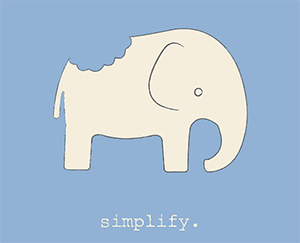Soundbites. 140 character posts. Instagram photos. Society is emerging from an era of short, limited bits of information, created by the public relations and marketing firms of the past 100 years for the purpose of selling us things through behavioral conditioning. And it's about damn time.
Before there was an internet, there was television. Before that was radio, and it's precursor was printed media in the form of newspapers and magazines. If we stretch back into the far reaches of time, however, we find the oldest - and most effective - form of information dissemination, storytelling.
Even before man had the written word, we passed on our history and learned experiences to our children and future generations through storytelling. The great myths of the world, such as we find in Greek mythology, were constructed to explain not only the things our ancestors couldn't understand, but also their understanding of how things happened in the past.
Some stories were meant to provide answers to unanswerable questions - like religious ideas or the most basic "where did we come from?" - while others were devised simply as devices to remember and pass on known information - such as the stories of the constellations, which provided ancient travelers with a means of navigation.
The most effective way to get your message out is by telling your own story, or your brand's story. That doesn't have to mean the equivalent of your "About Us" page on your website. It encompasses who you are, where you came from, where you're going, what you're about, and what you're currently doing. It's who you are as a whole.
 The Return of the King - Longform
The Return of the King - Longform
Short bursts of information certainly aren't disappearing. This is evident in the proliferation of top websites devoted to the revered "listicle". We still love a list of ten things that is easy to quickly digest and regurgitate. However, the most viral, read, and shared pieces today, apart from images, are found in the resurgence of longform articles.
Why? Good storytelling, plain and simple. Humans love a good story, and the narrative makes the information easier to both read and remember. Yet, social media is still growing as a dominant space for sharing, communicating, and marketing. How do we reconcile the hunger for a good story with the short posts that make up social media sites? By understanding that a story can be overarching.
Perhaps a good analogy for explaining this seeming dichotomy is the idea of television dramas. We digest 20-40 minutes of a story at a time (when you remove the time taken up by commercials), but it's the ongoing story line that we enjoy and remember as a whole. Consider the television drama Breaking Bad, considered to be one of the best-written dramas on TV ever. Can you imagine watching all 5 seasons consecutively? Few would have that kind of attention span (or time off from work).
But watching small episodes of the story over long period kept the audience enthralled. It wasn't the content of a single episode, but the overarching story - and how the episode fit into that story - that kept them coming back. This is how we need to approach social media, as small pieces of our overall story.
 Eating the Elephant
Eating the Elephant
You know the old saying, you have to eat it one bite at a time. The same goes for telling your story through social media. A tweet is a small, edible chunk of who you are. So is an Instagram photo, as is a Facebook post, as is a blog post. A well-rounded online presence allows you to better tell your story, which means a better chance of gaining followers who want to hear it.
Examining your online strategy from this viewpoint serves to emphasize even more the advice you have heard from every social media guru out there: consistency across platforms is the key. What kind of story are you telling?
If you aren't consistent in your style, approach, voice, and messaging on every platform where you have a presence, your readers and followers might think they're reading Portrait of the Artist as a Young Man by James Joyce (I'll leave that reference for the uninitiated to follow up on). You want them feel like they're reading Frog and Toad are Friends - simple, enjoyable, and with some point to it.
When you're followers see a photo, link, post, or tweet you've sent out, they should immediately be able to fit that item into their perception of your 'personality'.
 Tools of the Trade
Tools of the Trade
There are tools available to you to ensure your consistency online, and they are found in our social media management software. The first way it helps you with this is by allowing you to cross-post the same content on multiple networks simultaneously. Secondly, it allows you to set up work flows with approval if you have multiple people in your company that post to the same accounts. You can assign one person or a small group to approve each post before it goes out, making sure that it isn't inconsistent with your company's voice or message.
Finally, our dashboard will provide you with top-notch monitoring and analysis tools. Being able to measure brand sentiment all across the web is a good indicator of whether your story is being recieved well or not. Knowing which posts are the most well-recieved will help you hone and fine-tune your storytelling craft.
Your story needs to be told. There are potential customers and/or followers waiting to hear it. Let us help you tell it. Hey, if it's good enough maybe you can even get a film option out of the deal.


